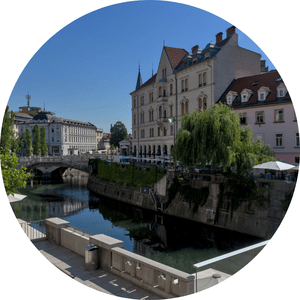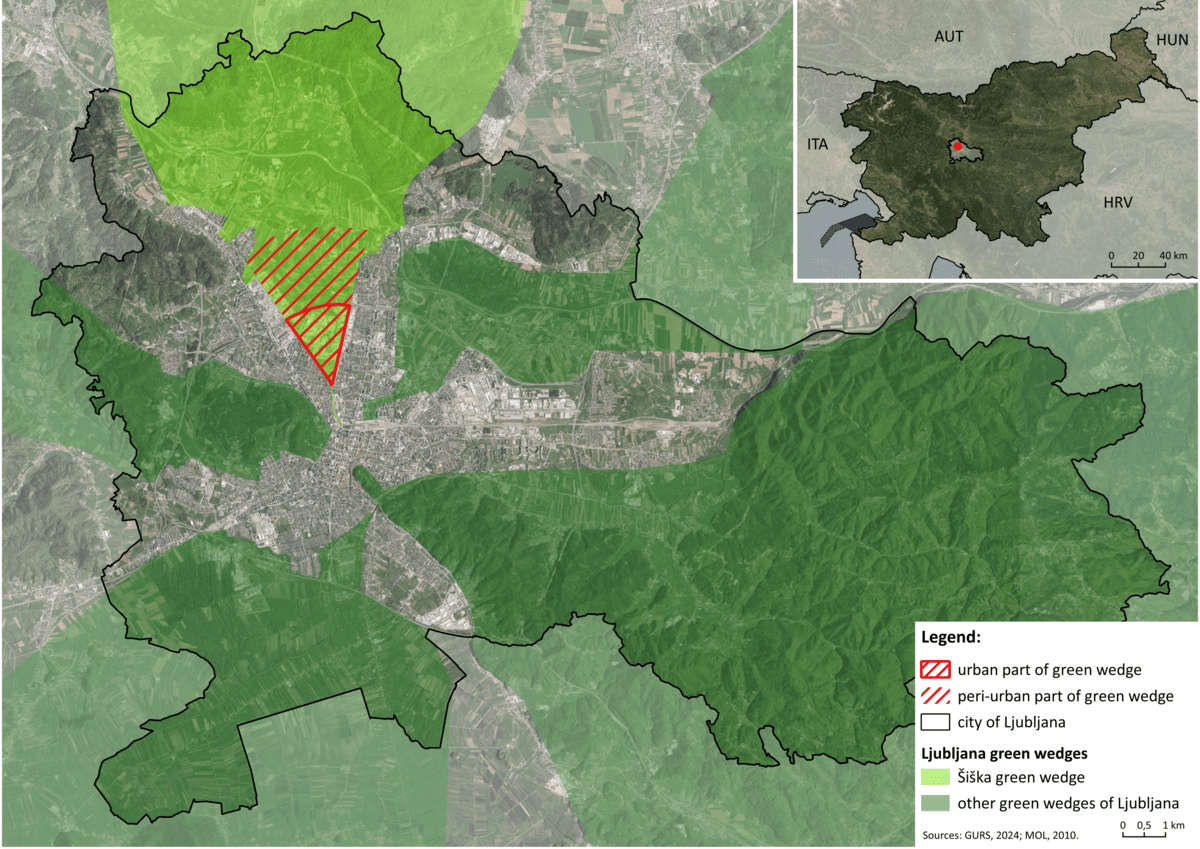Pilot
Slovenia
Ljubljana
Green wedges: linking city, nature, and future.
The pilot focuses on the City Municipality of Ljubljana, the capital of Slovenia, with an emphasis on its unique green wedges structure. The city’s urban form resembles a star shaped, where development follows seven main corridors consisting of major roads and railways. Between these corridors, five green wedges serve as essential ecological and recreational spaces, providing a natural balance to urban expansion. These areas include parks, green, and agricultural land but face pressure from urban development. Maintaining the integrity of these green wedges is crucial for preserving biodiversity, ensuring climate resilience, and enhancing the quality of life for residents.
Map of the Ljubljana pilot. Some of the green wedges inside the motorway ring are partly built-up.


